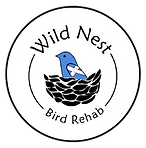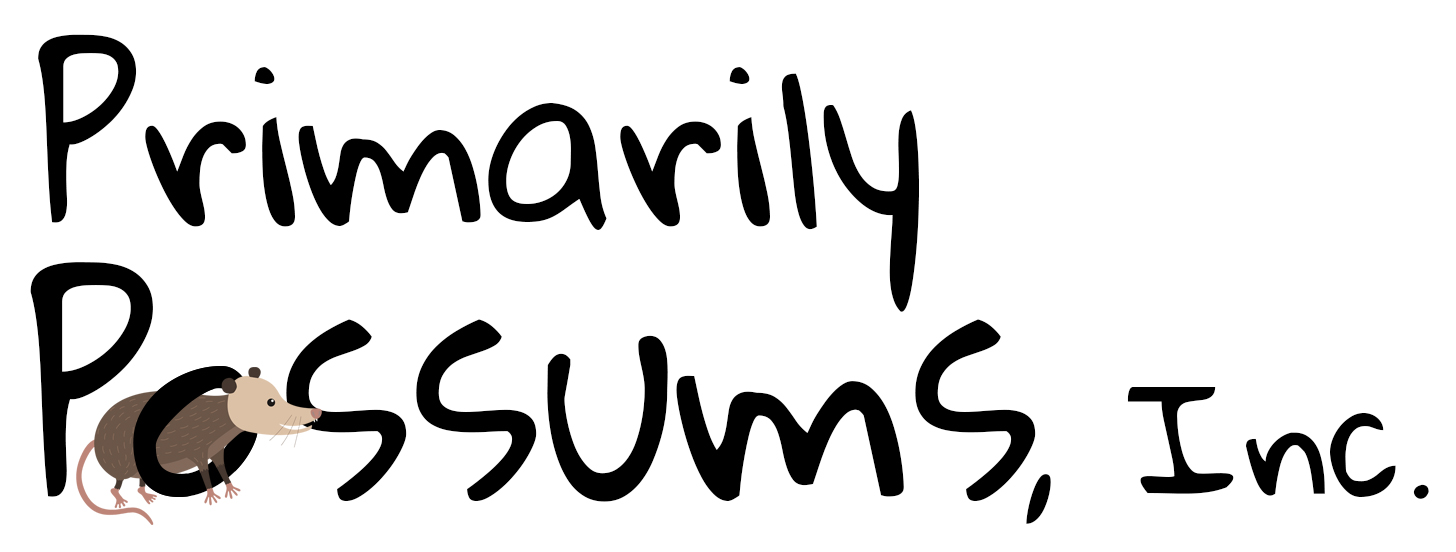Need Immediate Help?
Help I've Found A Wild Animal
If you need help and have found a wild animal, please review our frequently asked questions below. Several of these questions can help you understand what to do if you have found a wild animal. If you have found what seems to be an orphaned wild mammal, leave it alone and it will probably find its way back to it’s parent. If you have found a wild animal that needs help and appears to be injured, then please contact us immediately. Some species will leave their young alone for several hours and they are not orphaned. Other species like opossums rarely return for their babies and need to be rehabbed.
**This does not apply to opossums whose Mamas lose track of!
Observe
A young animal’s best chance for surviving is with its parents. The first thing to do if you see a baby animal is to step away. You can assess the young animal from a distance. Many young animals appear to be abandoned. Oftentimes, their mother has not abandoned the young, but limits the number of visits to the nesting area to prevent predators from discovering its location. Humans are considered a predator and the parents will stay away while we are in the area. If the young look content and quiet, they are probably being well cared for and should be left alone.
Is it uninjured, furred and moving well?
If you find a baby mammal that is uninjured, is furred, and moving well, leave it alone, it will probably find its way back to a parent, or its parent will find it. If you see the nest, put on some gloves, and gently place the baby back in the nest. Despite the common misconception, wild animal parents will NOT reject babies if humans have touched them! A baby animal will always have the best chance for survival if it is raised by its parents.
*This information is from Tufts Cummings Schools of Veterinary MedicineDepending on the species, baby animals may be left alone for up to 12 hours at a time for rabbits, or the parents only seem to be away but are watching you very closely. Some species like opossums rarely return for their babies. If an animal is in obvious distress or injured, or has been wandering around and crying then we’d being him into rehab.
In a nutshell: Contain safely with YOUR safety in mind. That means don’t even touch them if you don’t have to, and only do so with gloves. Read on for thorough, explicit instructions.
Then call me.
DO NOT attempt to capture or transport an animal unless you believe it is absolutely critical to his health and survival.
For an injured animal, the shock and fear associated with being handled may be enough to kill him. Further, a frightened animal can cause you harm.
DO NOT attempt to capture or transport rabies vector species, including foxes, skunks, raccoons, groundhogs, and bats, without specific instruction from an expert. Even a small scratch can result in a fatal case of rabies and will almost certainly result in the animal being killed to determine whether or not she has rabies.
Please understand that the risk of disease accompanies handling most animals.
Rodents, for instance, may carry a host of communicable diseases. Exercise the utmost caution when handling or capturing an animal.
If you find yourself in a situation where you believe you must capture an animal for the sake of her health and survival, and you have so far been unable to reach an expert, follow the instructions below:
-
Try to minimize direct contact with the animal. Always wear protective clothing, including gloves and long sleeves to protect against bites and scratches.
-
Find a well-ventilated, enclosed box or animal carrier and line it with something absorbent, including newspaper, clean sheets, or t-shirts. Refrain from using garments with loose knit or frayed edges, as these can actually be harmful to the animal.
-
With a cloth or t-shirt in hand, approach the animal from behind and gently but securely grab hold of her. Keeping the animal covered minimizes stress and keeps you protected. Then carefully place her in the box or carrier you have chosen. If you are trying to catch a bird, butterfly nets can be useful.
-
Place the box or carrier in someplace quiet and dark. DO NOT handle the animal unless absolutely necessary, as this causes stress and can lead to shock, and potentially death. If you are unable to transport the animal, place a heating pad underneath half of the box, though you should not do so on a hot day. DO NOT feed or give water to the animal. Forcing an injured animal to drink water could kill her, and if she gets wet she could suffer hypothermia and die.
-
Refrain from administering any type of treatment unless the animal is bleeding severely. In such a situation, apply steady, gentle pressure to stop the bleeding. DO NOT apply a tourniquet.
-
Once you are ready to transport the animal, place the carrier on the floor of your car, and keep the car warm and quiet. Avoid sudden stops and sharp turns. DO NOT let anyone, especially a child, hold the animal in his or her lap during the trip. If the animal is too large or too heavy for a carrier, simply wrapping him in a blanket and placing him in a stable location – such as the back of an SUV or van – may be the best option.
If she’s been hit, move yourself and her well off the road, we want you to stay safe. DO NOT REMOVE THE BABIES. If the babies are moving around by themselves, just stick them back with her, and bring the whole family to me. Call me 706-255-7395
If it’s a baby bird, safely contain it and get in touch with Wild Nest Bird Rehab immediately. The bacteria in a cat’s mouth and claws is deadly to baby birds.
See I found a baby bunny/nest for more info
If it’s a baby mammal such as a squirrel or bunny, safely contain it in a warm, dark and secure container. Do not pet it or try to soothe it, as they perceive any interaction as threatening and stress can kill. Then give me a call.
If you find a rabbit’s nest or accidentally uncover one, here are the steps you can take.
Step one should always be LEAVE IT ALONE! Cover the nest back up as best as you can. Lay blades of grass in a tik-tac-toe fashion on top.
You could take a photo so you have something better than your memory for knowing how you laid them.
Mom only visits to nurse briefly twice a day and is out there watching you.
Don’t keep checking or uncovering the nest during the day. The next morning, check the grass design. Did you take a photo?
If the blades have been disturbed, it’s likely Mom has not gotten upset at your mistake, and is feeding her babies still.
If the grass looks the same, wait until after dusk to give Mom another chance.
Did you find the nest is open and empty? Mom has moved the babies.
What should you do if a dog or cat uncovered the nest, and maybe hurt the babies?
For injured babies or ones that have been in contact with a cat’s mouth, regardless of visible wounds, give me a call.
If your dog only uncovered the nest, you can place a barrier around it made from temporary garden fencing, a lawn chair turned over, or a laundry basket with an entrance and an exit hole cut out.
Why did Mama build a nest in my dog’s pen? Eastern cottontails have a little bit of prairie in them and feel safe when they can get a 360 degree view of what’s going on.
Dog pens usually have that vantage, and she has smelled that no other predators have been entering this area.
Why they don’t interpret the dog as a threat, we’re not sure. It’s not unusual and they aren’t being dumb.
 Foliage-roosting bats have beautiful fur in shades of reds, yellows and tans (like dried leaves), or they have multi-colored fur that is frosted with white.
These bats are frequently found on the ground in the early summer when mothers are moving their young, or when they become grounded following blue-jay attacks or storms.
Occasionally, these bats panic and defend themselves when humans approach by spreading their wings in mock-attack and making loud hissing or clicking noises.
Follow the steps given below to rescue a tree-roosting bat. If you feel unequipped to move the bat, proceed to step five.
Note: If the bat is a gray or brown color, it is probably a crevice-dwelling species. Crevice-dwelling bats found out of doors and grounded will need to be examined and cared for by a wildlife rehabilitator.
Place the bat into a container using the method described in “A Bat Found Indoors”, and proceed to step five.
1. Make sure the bat is safe from predators.
Have someone stand guard over the bat so it does not fall prey to domestic pets, fire ants or blue jays. If the bat remains quiet and still, proceed to step 2. If the bat panics as described above, proceed to step 5.
2. Do not use your hands to help the bat.
Instead, gently touch a small tree branch (two or three feet in length) to the bats feet. This usually initiates a grab reflex and the bat will grip the branch with its toes. When you lift the branch you can inspect the bat (or mother bat with babies) for any injuries. If the infants are clinging to the mother and there are no apparent injuries, proceed with step 3. If injuries are detected, proceed to step 5.
3. SLOWLY move the bats into the branches of a nearby tree.
This must be done very carefully. A sudden move may cause a mother bat to fly off and abandon her young. Using a ladder, gently secure the branch into a spot where foliage and leaves conceal the bats. The spot should be on a branch at least eight or more feet from the ground, with a clearing below to enable the bat to take flight. (Do not place the bats in the same tree where the attack may have occurred and do not place bats on the trunk of a tree where they will be vulnerable to predators. Also make sure there is no visible bird’s nest in the tree.) Proceed to step 4.
4. Monitor the area.
Check the area the following morning. If the bat has remained in the same position overnight it may have an undetected injury or illness. If the mother bat is gone but her babies remain, the babies may have been abandoned. Proceed to step 5.
5. Call a local wildlife rehabilitator for assistance.
*Information provided by Bat World Sanctuary.
Foliage-roosting bats have beautiful fur in shades of reds, yellows and tans (like dried leaves), or they have multi-colored fur that is frosted with white.
These bats are frequently found on the ground in the early summer when mothers are moving their young, or when they become grounded following blue-jay attacks or storms.
Occasionally, these bats panic and defend themselves when humans approach by spreading their wings in mock-attack and making loud hissing or clicking noises.
Follow the steps given below to rescue a tree-roosting bat. If you feel unequipped to move the bat, proceed to step five.
Note: If the bat is a gray or brown color, it is probably a crevice-dwelling species. Crevice-dwelling bats found out of doors and grounded will need to be examined and cared for by a wildlife rehabilitator.
Place the bat into a container using the method described in “A Bat Found Indoors”, and proceed to step five.
1. Make sure the bat is safe from predators.
Have someone stand guard over the bat so it does not fall prey to domestic pets, fire ants or blue jays. If the bat remains quiet and still, proceed to step 2. If the bat panics as described above, proceed to step 5.
2. Do not use your hands to help the bat.
Instead, gently touch a small tree branch (two or three feet in length) to the bats feet. This usually initiates a grab reflex and the bat will grip the branch with its toes. When you lift the branch you can inspect the bat (or mother bat with babies) for any injuries. If the infants are clinging to the mother and there are no apparent injuries, proceed with step 3. If injuries are detected, proceed to step 5.
3. SLOWLY move the bats into the branches of a nearby tree.
This must be done very carefully. A sudden move may cause a mother bat to fly off and abandon her young. Using a ladder, gently secure the branch into a spot where foliage and leaves conceal the bats. The spot should be on a branch at least eight or more feet from the ground, with a clearing below to enable the bat to take flight. (Do not place the bats in the same tree where the attack may have occurred and do not place bats on the trunk of a tree where they will be vulnerable to predators. Also make sure there is no visible bird’s nest in the tree.) Proceed to step 4.
4. Monitor the area.
Check the area the following morning. If the bat has remained in the same position overnight it may have an undetected injury or illness. If the mother bat is gone but her babies remain, the babies may have been abandoned. Proceed to step 5.
5. Call a local wildlife rehabilitator for assistance.
*Information provided by Bat World Sanctuary.Cover the glue with leaves or strips of paper towel to prevent the animal from becoming more stuck. The animal might still be alive enough that it’s aggressive so wear gloves. Follow the thorough instructions at this page https://primarilypossums.org/glue-traps/ or this link below
The biggest challenge when dealing with a waterfowl that has an injured leg, or is wrapped in fishing twine, etc. is that they can still swim. Unless someone has a boat or two, we have to wait until the bird is sleeping on land, or habituated to being fed. The third option is to wait until the bird is so down it can’t struggle. Timing is also important: if you can go ahead and contain the bird in any manner, and then call me, we can work out the rest.
This is another situation where I can’t help until the animal is contained, with your safety a priority. I have included a playlist of videos to help. Click here for the playlist.
A BAT FOUND FOUND INDOORS
A bat that is found indoors is most likely to be a crevice-dwelling species. Although the fur color of crevice-dwelling bats varies, it is usually a shade of gray or brown. These bats are often lost youngsters or migrating bats. Oftentimes they will find their way out through an open window or door.
If a bat is flying in a room you can help it find its way out through an open door by turning off the lights inside the room and shining a flashlight beam out the open door.
Make sure doors to other rooms are closed off first and the only door open leads to the outside. If this is not an option, and if you feel confident that you can move the animal without physically touching it or injuring it, proceed to step one.
Otherwise, proceed to step five.
1. Wait until the animal is motionless. A bat that is flying is almost impossible to catch, and you have a greater chance of injuring the bat if you attempt to capture it while it is airborne. In addition, bats that are caught while flying frequently panic and attempt to bite.
Be patient. Wait until the bat lands and is still, and then proceed to step 2.
2. Contain the bat. Quietly approach the bat, and wearing thick gloves or using a thick towel, gather the bat up (holding it securely but not tightly) and place it into a box or similar container with a lid.
Or instead, simply place a box, waste can, coffee can or similar object over the bat where it has landed.
Then, take a piece of cardboard and gently slide it between the box and the surface the bat is on (i.e. floor, wall or ceiling).
Keeping the cardboard in place, gently turn the container right side up. If the bat is captured during the day proceed to step 5.
If the bat is captured at night and does not appear to be a baby bat, proceed to step 3. Important note!: Do not place the bat in a bird cage or container with small openings.
Bats are very intelligent and can easily squeeze through a 1/4 x 1/2 inch crack.
3. Release the bat outdoors at nightfall. Once the bat has been captured, take the container outdoors. Take a flashlight and a towel or gloves with you in case the bat has problems flying away.
Find an elevated area (such as a deck or ladder), lift the box over your head, and tilt it to the side so the bat can fly out (the bat will not be able to fly out of a grounded container in a vertical position).
Proceed to step 4. (Note: Do not release the bat during the day or during cold or bad weather. Instead, proceed to step 5).
4. Watch it leave.
Use the flashlight to watch the bat fly away. If the bat does not fly away, or attempts to fly but seems unable to, it is likely that is has an injury or illness.
It may be a disoriented juvenile, or it may simply be dehydrated or starved from being trapped indoors.
If this is the case, use the towel or gloves (not bare hands) to gather the bat up. Keep the bat in the closed container and put it in a safe place that is free of children, pets, fire ants or other hazards, and proceed to step 5.
Note: It is not safe to attempt care for the bat on your own – bats should only be cared for by trained, vaccinated individuals. Furthermore, in order to survive, bats in this condition may need injections of electrolytes in addition to specialized food and caging.
5. Call a local wildlife rehabilitator for assistance
*Information supplied by Bat World Sanctuary
There are multiple ways you can help me help wildlife. I welcome regular volunteers who can commit to a weekly time during baby season- March through September. That involves cleaning and some feeding and meal preparation.
You can also help with specific projects like transportation, construction, repair, data entry, and photography.
I can receive donations through Paypal and Venmo-links are at the top of the page, and I have a Patreon account which has its own little perks.
Donations of garden bounty and surplus building materials are always welcome, too.
Thank you for trying to save the baby’s life. Stop whatever you are doing and call me 706-255-7395
Find A Rehabilitator
Find a Georgia rehabilitator near you with the Georgia Department of Natural Resources state map
Locate a wildlife rehabilitator anywhere in the U.S. with Animal Help Now
Quick links to top GA Rehab facilities

Wild Nest Bird Rehab
Saving the world one bird at a time

AWARE
Atlanta Wild Animal Rescue Effort

Chattahoochee Nature Center
Help for raptors and reptiles
Current Georgia wildlife rehabilitators list by species
Co-existing peacefully with wildlife is possible
Solving conflicts with foxes
Reducing conflicts with rats and mice
Meet your wild neighbors, the raccoons
Why killing coyotes isn’t the answer
Located in Ila, Georgia
Primarily Possums is located in Ila, Georgia (Madison County Georgia). We are glad to help if you have found a wild animal in our area. If you are located more than 60 miles away, you may want to use the GA DNR Locator App to find a rehabber closer to your location





